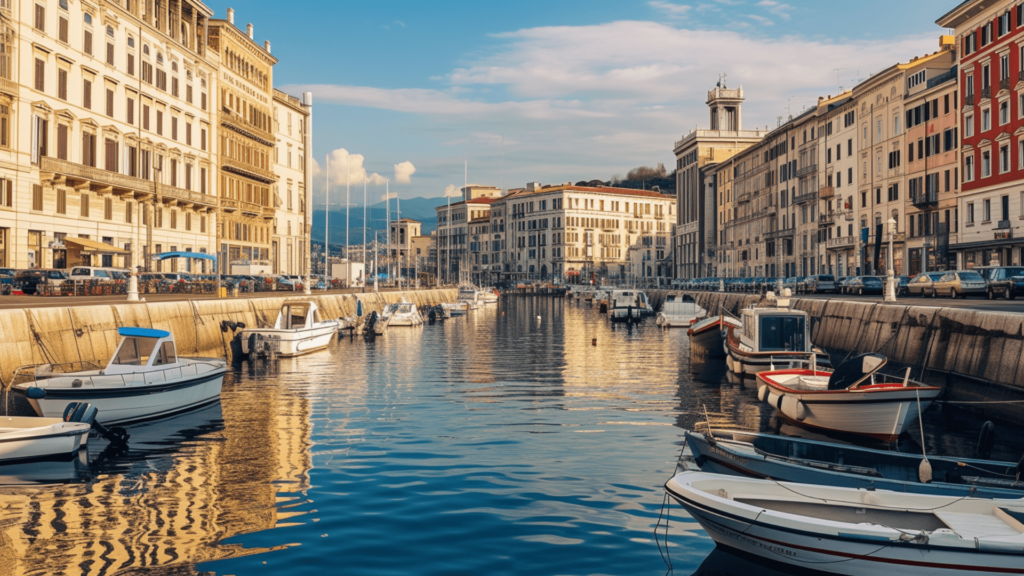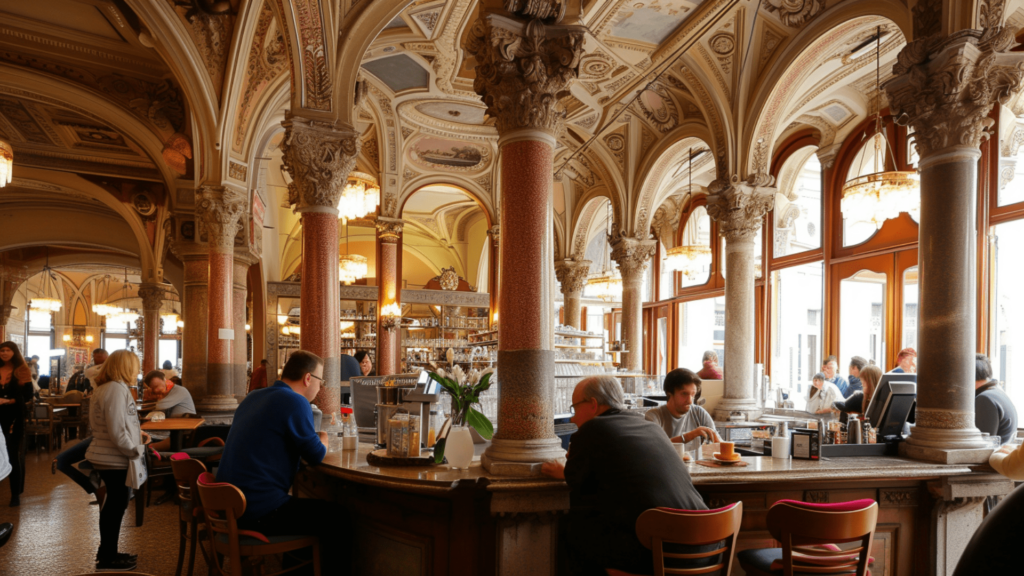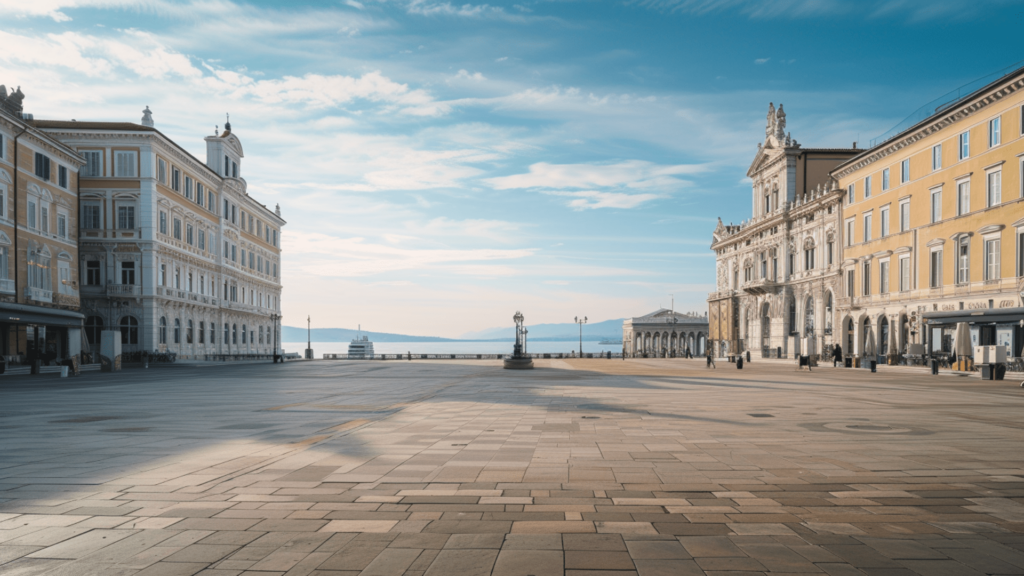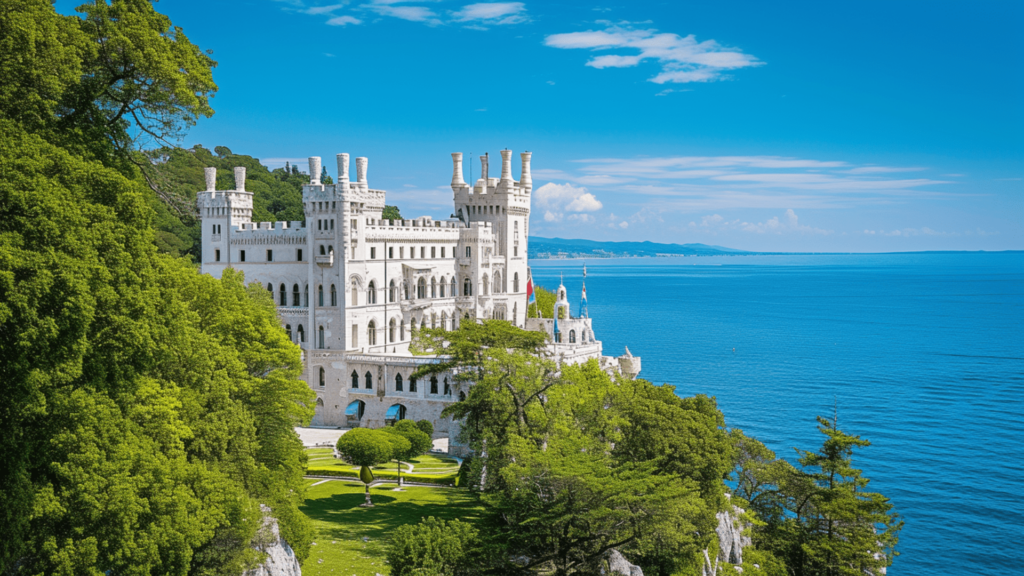Picture a city where the echoes of Latin, Slavic, and Germanic cultures blend seamlessly. Where the streets tell stories not just of Italy, but of a complex, intertwining history that transcends borders. Welcome to Trieste — a city that redefines what it means to be Italian with its diverse identity.

Trieste, nestled in Italy’s northeastern edge, is a city where diverse cultural currents converge, setting it apart from the traditional Italian milieu. This unique identity stems from its location at the crossroads of Latin, Slavic, and Germanic influences. The city’s linguistic landscape is a testament to its varied past, with Italian, Slovenian, and German echoing through its streets. In fact, Trieste’s diverse identity is considered to be one of the literary capitals and was even dubbed “Europiccola” because of its thriving ethnic, financial, and cultural crossroads.
This article aims to delve into the layers of Trieste’s diverse identity, exploring its position as an atypical Italian city with a rich, mixed heritage. Through examining its history, culture, and contemporary dynamics, we aim to uncover the reasons behind Trieste’s unique standing in Italy and celebrate its distinct charm.
The Crossroads of Cultures: Exploring Trieste’s Multicultural Legacy
Trieste’s diverse identity is deeply rooted in its history as a cultural crossroads. One can witness this in the varied architectural styles, from the Roman Theatre, a relic of its ancient past, to the Austrian influence seen in the majestic Miramare Castle. The Piazza Unità d’Italia, a grand square facing the sea, is surrounded by buildings that epitomize this cultural blend. Each corner of the city narrates a different chapter of its history, from the Byzantine San Giusto Cathedral to the Slovenian-influenced areas on the city outskirts.
The city’s museums and galleries, like the Revoltella Museum, house collections that speak to its multicultural heritage. These institutions not only preserve artworks but also tell the story of Trieste’s diverse identity. The city’s annual events and festivals further celebrate this diversity, showcasing music, food, and traditions from different cultures. In exploring Trieste’s streets, one encounters a city that has seamlessly woven its varied historical threads into a unique cultural fabric, offering a distinctly different experience from typical Italian towns. Trieste stands as a testament to the enduring richness of cultural fusion.

Global Influences and Local Experiences
The essence of Trieste’s diverse identity and global influences can be vividly experienced through its culinary and social scenes. The city’s historical role as a significant port has made it a gateway for diverse cultures, reflected in its food, architecture, and daily life. Trieste’s coffee culture, influenced by its Austrian past, is legendary. Cafés like Caffè San Marco and Caffè degli Specchi are not just coffee houses but cultural institutions where the Austro-Hungarian influence is palpable.
Moreover, Trieste’s cuisine is a delightful amalgamation of Italian, Austro-Hungarian, and Slavic flavors. Restaurants and eateries offer a range of dishes, from traditional Italian pastas and seafood to Central European goulash and strudels. The city’s markets, like the bustling Mercato Coperto, are melting pots of fresh local produce and international flavors, reflecting the city’s trade history. The city’s culinary scene is a mirror of its multicultural identity. Restaurants and cafes offer multicultural cuisines, showcasing the city’s history as a cultural melting pot. This fusion cuisine provides a unique gastronomic experience, different from the rest of Italy.
Meanwhile, The Grand Canal area is another focal point where the city’s multicultural spirit is visible. Lined with opulent hotels, cafes, and eateries, it’s a place where locals and visitors alike gather, offering a picturesque view of the city’s Venetian and Austrian architectural influences. The City Center, with its grid-like streets and elegant buildings, is a nod to the city’s Habsburg legacy.
Interestingly, Trieste’s diverse identity extends to its art and literature. The city has served as an inspiration for writers and artists aplenty, those drawn to its unique atmosphere. The International Trieste Film Festival showcases films from Central and Eastern Europe. It is a testament to the city’s ongoing cultural dialogue with its neighbors.
This blend of global influences and local experiences makes Trieste a city where history is not just preserved in monuments but is a living part of its urban fabric. It’s a place where the past and present coexist, creating a unique experience for visitors and residents alike.
Memories of a Bygone Era: Trieste’s Diverse Identity in the Yugoslav Context
Trieste’s connection with the former Yugoslavia is deeply rooted in its history and collective memory. The city was an important economic and cultural link during the Yugoslav era. The Piazza della Borsa, once a bustling trading center, stands as a reminder of the city’s financial past. The Revoltella Museum’s rich collection of modern art reflects the cultural exchanges between Trieste and Eastern Europe during the 20th century.
The city’s museums, like the Museum of the Sea and the Ethnographic Museum of Trieste, provide insights into this shared history, showcasing artifacts and exhibits that narrate the maritime and cultural exchanges between Trieste and the Balkans. The city’s architecture also holds traces of Yugoslav influence, with several buildings reflecting the styles and preferences of the era.
Aside from that, Trieste’s diverse identity in the literary and artistic scene was significantly influenced by its relationship with Yugoslavia. The city served as a cultural bridge, fostering exchanges in arts, literature, and ideas. This is evident in the city’s libraries and bookstores, which house a rich collection of works from the Yugoslav period.

Trieste Today: Its Diversity Identity Embracing Change
At present, Trieste is a city that actively embraces its multicultural legacy while looking toward the future. The Porto Vecchio, once the heart of its maritime activities, is evolving into a cultural and creative hub. This transformation symbolizes the city’s commitment to revitalizing its spaces while respecting its history. Contemporary art exhibitions, cultural events, and public spaces in this area reflect Trieste’s diverse identity and dynamic spirit.
In addition, the city’s academic and scientific institutions, like the International Centre for Theoretical Physics and the University of Trieste, draw a diverse international community, adding to the city’s vibrant cultural mix. These institutions are not only learning centers but also contribute to the city’s multicultural dialogue.
Not only that, but Trieste’s commitment to diversity is also visible in its community initiatives and events. The city hosts various cultural festivals and events celebrating its diverse heritage, from traditional Italian festivals to those highlighting its Central European and Balkan influences. These events allow locals and visitors to engage with Trieste’s rich cultural tapestry.

Unveiling Trieste: Embracing a Mosaic of Cultures
As we conclude our exploration of Trieste, we circle back to the essence of our introduction — the unique cultural identity of this Italian city. With its blend of Latin, Slavic, and Germanic influences, Trieste stands as a vibrant example of cultural fusion. Trieste is a living museum of European history, from its linguistic diversity to its architectural marvels. The city’s global influences, historical ties with Yugoslavia, and contemporary dynamism all contribute to its distinct character.
This journey through Trieste’s diverse identity reveals more than just a city’s history; it unveils the potential of cultural coexistence and harmony. Trieste serves as a beacon for multiculturalism, showing how diverse influences can create a rich, cohesive community.
As readers, we invite you to experience Trieste firsthand. Wander its multicultural streets, savor its unique cuisine, and immerse yourself in its rich history. Discover for yourself how this city beautifully defies the typical Italian stereotype and stands proudly as a testament to the enduring beauty of cultural diversity. Trieste awaits to share its story with you.











